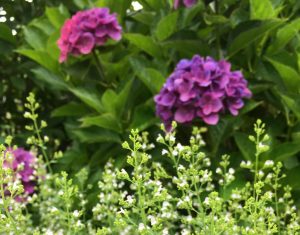 Now that Labor day has come and gone, it’s a great time to think about planting again. Shorter days and cooler nights push plants to ready themselves for winter. Transpiration (water loss) also slows to a minimum as leaves begin to senesce and drop, making watering far less of a concern than during the summer months. While growth above ground slows and eventually stops, most plants continue to grow roots underground, in preparation for the next flush of growth in the spring.
Now that Labor day has come and gone, it’s a great time to think about planting again. Shorter days and cooler nights push plants to ready themselves for winter. Transpiration (water loss) also slows to a minimum as leaves begin to senesce and drop, making watering far less of a concern than during the summer months. While growth above ground slows and eventually stops, most plants continue to grow roots underground, in preparation for the next flush of growth in the spring.
Root development in woody plants has been been extensively studied over the years. Scientists have found that the roots of woody plants continue to grow during the fall and winter, as long as the soil is not frozen solid. As the ground seldom freezes on Nantucket before Christmas, and often thaws for long stretches in the winter, we have the luxury of being able to plant woodies almost year-round.
Best planting practices should be used to insure success with late season planting.
- Carefully consider the site, being sure to choose plants that will thrive in the conditions present. Pay particular attention to how much sun the area receives and the quality of the native soil; whether it is sandy, clayey, dry or overly wet.
- Choose healthy plants, that have a strong root system
- Dig a hole as wide as possible in the shape of a broad saucer to allow rapid root growth in the top 12″ of soil.
- Be sure that the hole is not deeper than the root ball is high. It is better that root ball of any plant rests on undisturbed soil and that the crown is slightly higher than grade once planted. Loose soil at the bottom of the hole can settle over time, leaving the plant too low in ground.
- If planting amendments are used, keep them to a minimum. Making a small pocket of overly rich soil next to the base of the plant can discourage root growth into the native soil. If fertilizers are used, consider going organic, and avoid additional phosphorous. Fertilizer should not be applied after mid-October on Nantucket.
- Balled and Burlapped plants are best “wet-set”. Place the plant in the hole. Back fill the plant by half. Next, fill the hole with water and allow it to drain. Finally, complete the planting and lightly tamp around the plant, without overly compressing the soil.
- Mulch is recommended for most new plantings, but keep it away from the trunks of trees and the crowns of grasses and other perennials. Mulch piled up onto plants can cause them to decline over time. Three inches should be a sufficient thickness for most jobs. Bark mulch should not be considered a permanent design element, but more as a way to protect and enrich the soil as properly-spaced plants fill in and create a “living mulch” over time.
